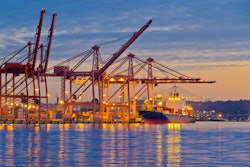
We've seen the headlines increase, setting a precedent: cross-border freight between the U.S. and Mexico is a lifeline for many in the industry. With Mexico's growing prominence as a nearshoring destination and the United States' robust demand for reliable trade routes, especially in times of uncertainty and movement in the U.S. government, the freight passage will continue to play a role in supply chain strategies.
Ryan Williams, VP of solutions and head of cross-border at Coyote Logistics, says there's currently much discussion surrounding the position of freight between the U.S. and Mexico— which is up 10.6% from 2023, according to the Bureau of Transportation Statistics —and this growth is only expected to continue trending upwards.
"We’re continuing to see shippers who historically import from Asia to the West Coast – especially those who ship into Mexico – filter inland to mitigate costs and time spent on freight transportation. In Mexico, these companies are setting up new factories closer to the border, and this northbound shift of manufacturing is having downstream impacts on the lanes freight move in from origin points within Mexico and on the makeup of the freight load itself," says Williams.
As shipping volumes increase in Mexico and the market continues to evolve, Williams says shippers should focus on building strong, long-lasting relationships founded on trust with providers instead of leveraging a large number of carriers. Tips like avoiding quick, transactional experiences with carriers can help companies ensure their teams maximize business value from the relationship to future-proofing supply chains with collaboration.
"As a result of increased shipping volumes and greater competition for carriers at the border, we’re also seeing carriers that have historically focused on shipping specialized freight offer to carry freight outside of their niche to capitalize on the heightened demand," explains Williams. "And even though freight rates have generally been stable throughout 2024, we expect this competitive environment to contribute to climbing rates toward the end of the year, especially as Peak Season volumes begin to pick up."
The U.S.-Mexico cross-border corridor offers collaboration and competition for businesses looking to drive efficiency in their supply chains. Collaborative strategies and digital tools can help businesses through evolving trade policies and even unlock new opportunities in 2025.














![Pros To Know 2026 [color]](https://img.sdcexec.com/mindful/acbm/workspaces/default/uploads/2025/08/prostoknow-2026-color.mduFvhpgMk.png?ar=16%3A9&auto=format%2Ccompress&bg=fff&fill-color=fff&fit=fill&h=135&q=70&w=240)


